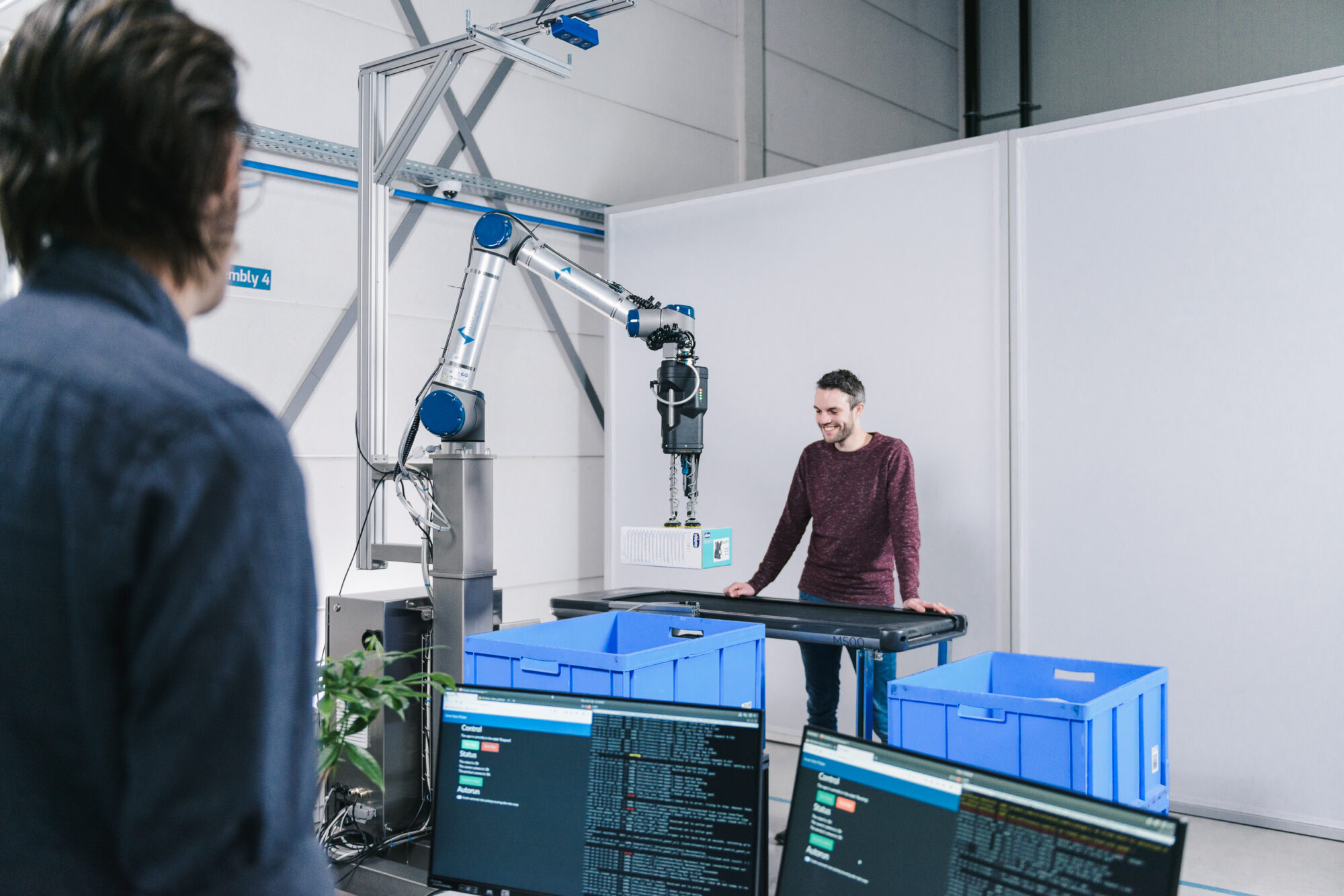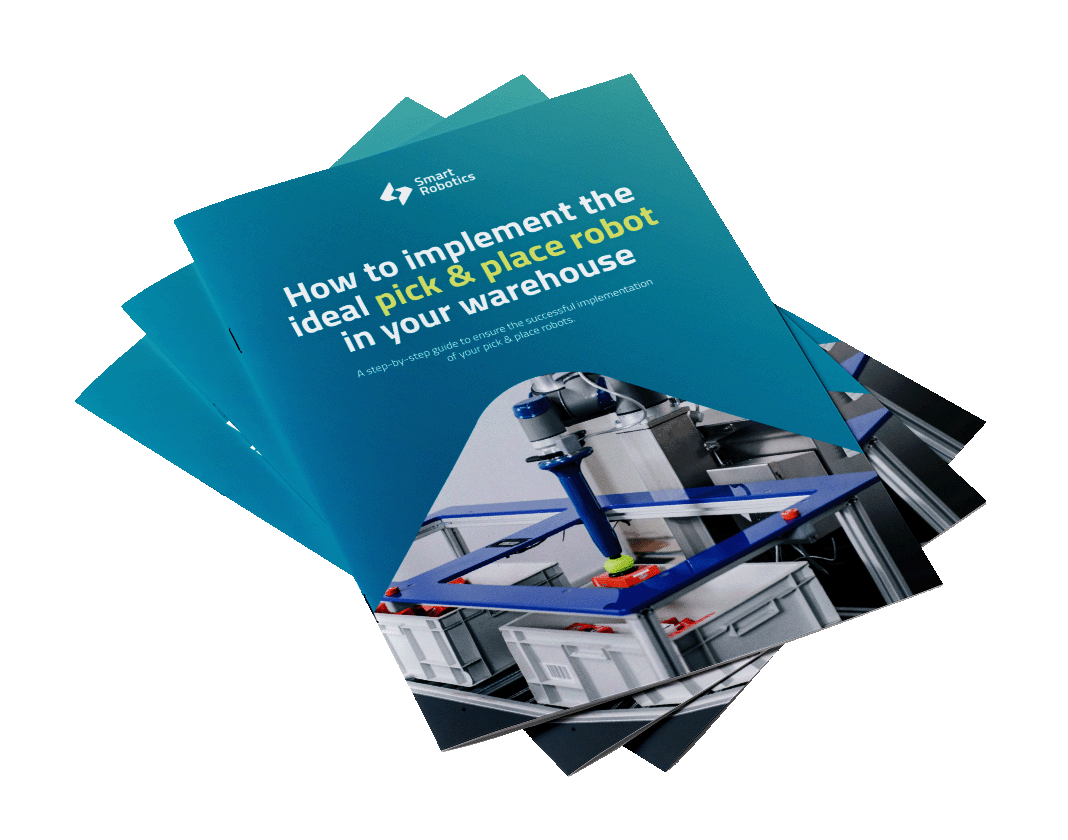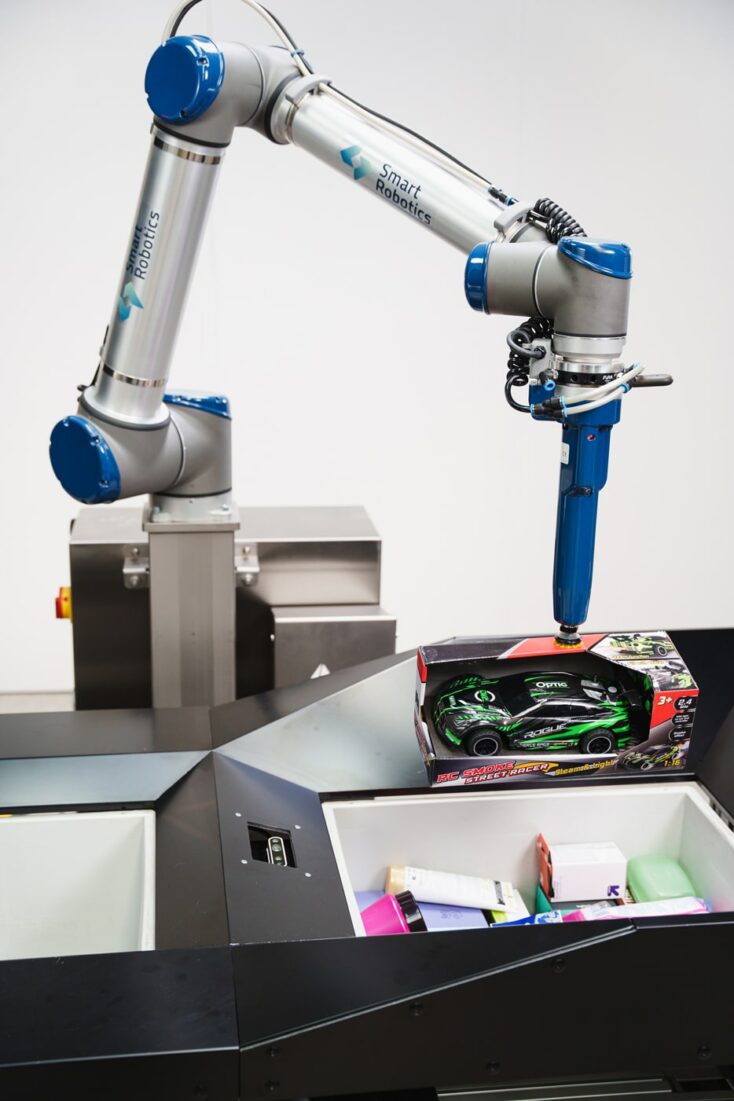Table of contents
Get in touch with our team

This site is protected by reCAPTCHA and the Google Privacy Policy and Terms of Service apply.

How to choose a pick and place robot
Table of contents
The need for picking automation is growing tremendously. The worldwide market for warehouse robotics was worth more than $2.5 billion in 2017. In 2026 this will become $7.8 billion, according to a report from Research and Markets and as we navigate through 2024 it is expected to reach an impressive $19.3 billion by 2032. That growth is reasoned, as e-tail, retail and the parcel industry are growing much faster than the labor market can handle. That is why picking automation is a logical next step. However, how do you choose the perfect pick and place robot for your warehouse? You want a robot that fits certain requirements. That is why this blog highlights 5 important questions to consider when choosing a pick and place robot in 2024.
How many items does the pick and place robot need to successfully pick
As markets such as ecommerce, retail and the parcel industry typically process millions of different items, one cannot expect a robot to be able to pick and place them all. Sometimes they can only handle 60% of the item range, sometimes up to 95%. Can the item be spotted by the camera? Is the gripper able to hold the item? Is the software able to determine the correct position to pick the item? Hence, testing a pick and place robot is important. Testing a large range of items can help determine how well it can handle the diversity of items.
What picking speed does the pick and place robot need to have?
The speed of pick and place robots varies between 300 to 800 items per hour. The speed needed depends on the up- and downstream process speeds. Several factors influence the picking speed and should be taken into account. How well can the robot pick an item? Can it pick it in one go, or does it need multiple tries? Is the movement smooth enough with less risk of losing an item? In addition, vision processing speed is important and can be a limiting factor.
What specific steps does the robot need to execute?
Does the robot need to scan a barcode? Should items be placed on the belt in a specific orientation? Or should items be sorted based weight or dimensions? Quality control could also be needed. These are all features that differ a lot per supplier, so one should take these steps into account when looking for the perfect match.
How easy to use is the pick and place robot?
Luckily, most pick and place robots work autonomously and need very little tuning by an operator. When looking for a pick and place robot, keep in mind any special situations that may occur. Is the robot suitable for the level of your operators? Can they easily determine what is wrong and solve it independently? How user-friendly is the robot? Can it collaborate with people? Should it be a robot or a cobot ?
Can the robot adjust to changing processes?
As flexibility in logistics processes is of great importance, especially with the ever growing demand and variety, it is important to test if the pick and place robot can be deployed in changing situations. Can the robot be configured to pick from a carton, while at first it was programmed to pick from a tote? Or can the robot adjust to the addition of totes with compartments? Of course, it is hard to see what the future holds, but the way a pick and place robot is developed can help determine whether it is prepared for changing tasks.
Choosing a perfect pick and place robot for your logistics process is not easy. There are a lot of things one needs to take into account. The questions above, however, can help give an idea of what to consider when looking for a pick and place robot and can provide the first steps in the process.
Get in touch with our team

This site is protected by reCAPTCHA and the Google Privacy Policy and Terms of Service apply.
Learn how to implement the ideal pick & place robot
Download our free white paper and get ready to improve your warehouse efficiency with a pick & place robot. Leave your contact details and immediately receive an email with the white paper.





